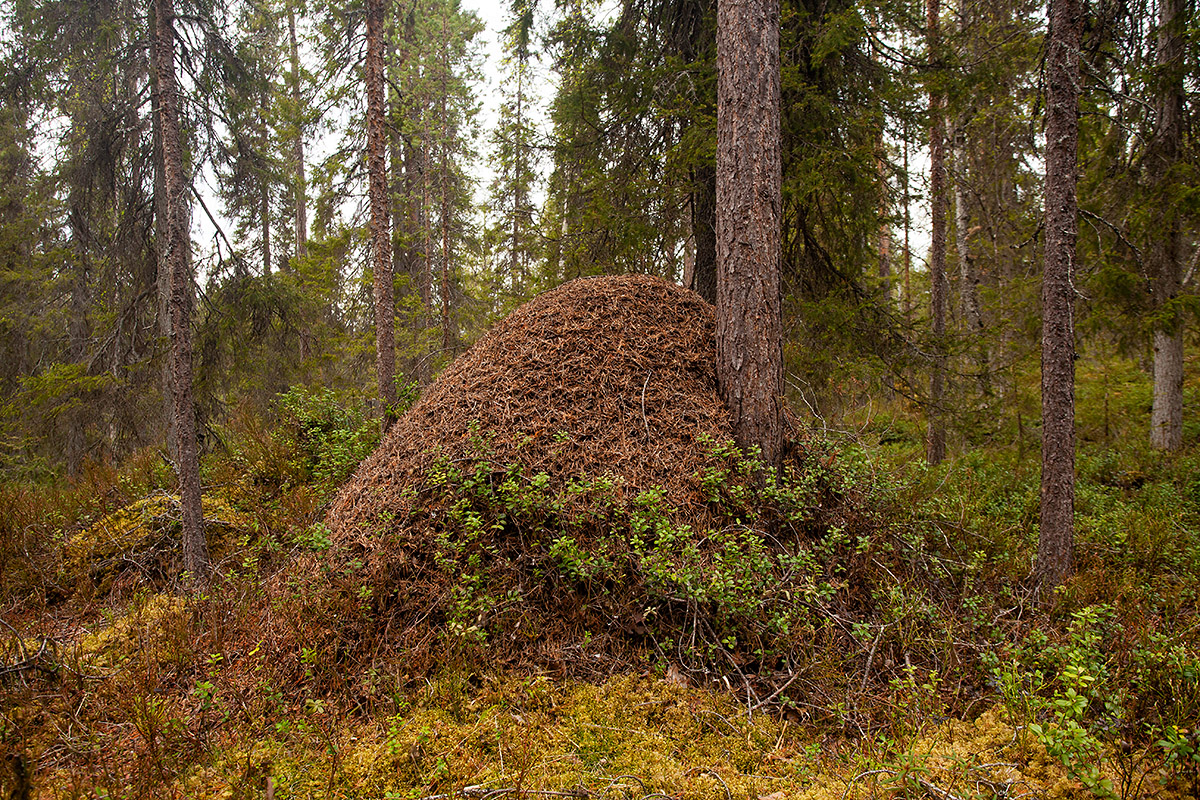It is easier to keep the ants away from houses and gardens than to get rid of an already established wood ant hill

Ants that roam the garden can be a great scourge: their hills grow bigger every year, they sneak into buildings, and no plants will grow in a flower bed when the ants roam there. Wood ants definitely belong in the forest and, if possible, you should avoid letting them gain a foothold in the garden.
If you find an anthill in the attic, shed, or foundation, it was usually built by red wood ants, who are a protected species. If you see a large ant hill in the corner of the garden, you can be sure that it belongs to the protected wood ants; in total, there are seven species of wood ants [1]. The busy ants in the flower beds and under the pavement stones are generally various species of black ants.
If wood ants do not find enough insects to eat in your home garden, they will start growing greenflies on fruit trees and berry bushes, which is definitely not good for the harvest.
It is easier to keep the ants away from houses and gardens than to get rid of an already established wood ant hill – so you should act as soon as you notice that the ants have started building. It is much easier to move a small nest than a large one.
Before moving the anthill, contact the local Environmental Board and ask their specialists for advice on how to proceed. The permission of the Environmental Board is also required for the relocation of the nest. Under no circumstances should you poison or burn the wood ant colony – these are protected species.
When moving the anthill, it is important to bring all spare ants and queens. And there could be hundreds of them! If some of them are left behind, the ants will rebuild in their old spot. Spare ants are larger than worker ants and queen ants are even bulkier than them.
The best time to move an ant nest is in March and April, when the ants gather in a thick layer on top of the nest to warm themselves.
If the transporting does not take a lot of time, you can just push the anthill into a large garbage bag. For slower transport, a tightly closed box or barrel is better. In addition to the above-ground part of the nest with the ants, you should also take the soil and sand below and next to it along – there are anthills and ants there too. The nest should be moved at least 500 metres away.
You should relocate the wood ants to a coniferous forest which is not due for a felling in the next few years. It would be good to move them to a protected area, for example. Make sure that there are no competing ant species in the area, because then there will be a war between the species, which the newcomers will lose [2].
Editors: Sigrid Ots, Reigo Roasto
Last modified: 17.01.2022
__________________________________________________
[1] http://vana.loodusajakiri.ee/loodus/artikkel326_294.html
[2] https://lood.delfi.ee/maakodu/aed/nouanne-kuidas-aias-sipelgapesadest-lahti-saada?id=71087327